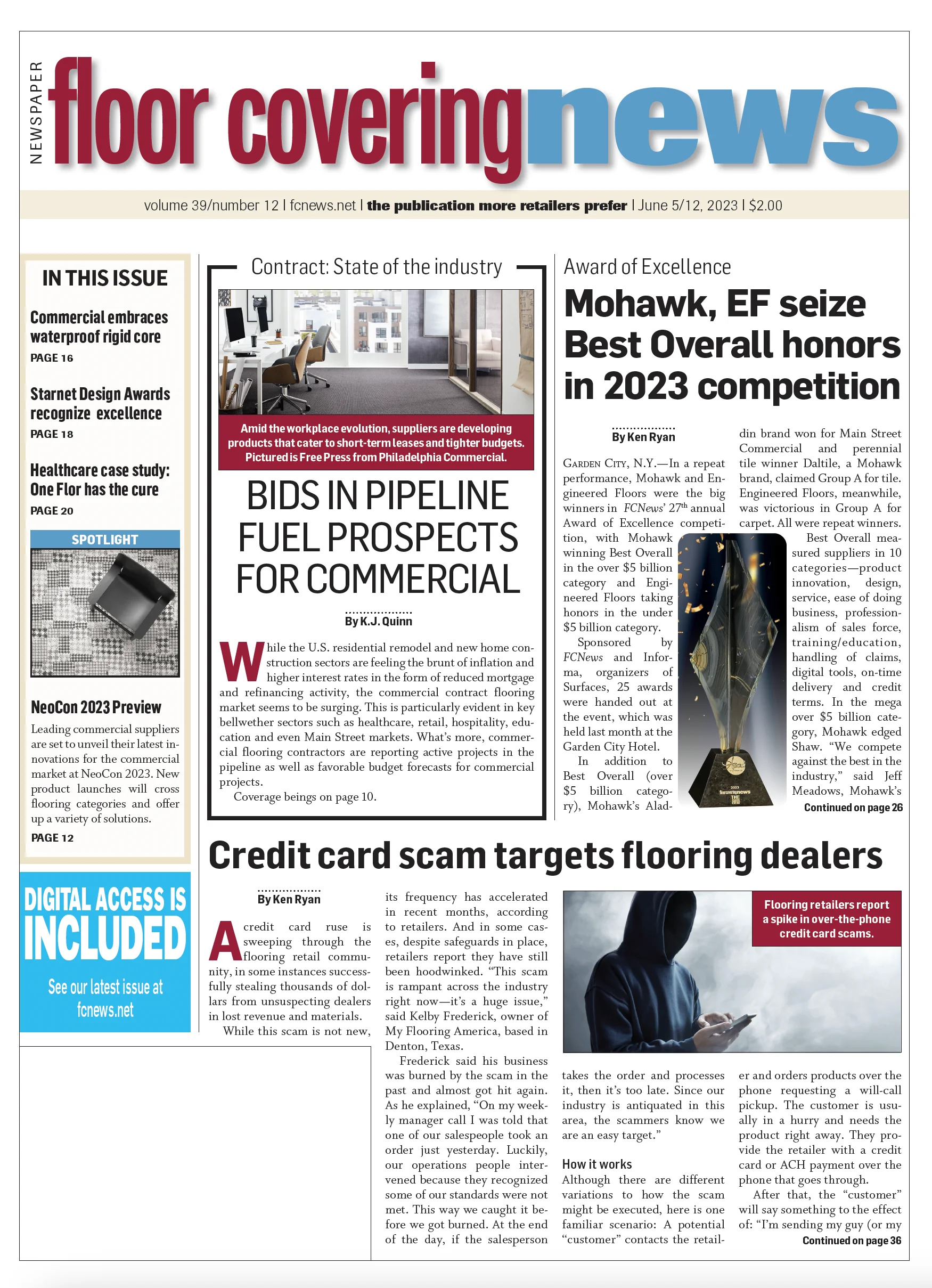 The Federal Reserve—the independent agency responsible for setting monetary policy in the U.S.—raised eyebrows last year when it openly stated that it would willingly accept the trade-off of potentially higher unemployment to achieve its target rate of 2% inflation. That was back in August of 2022, when inflation was hovering around the 9% mark. Ten months and multiple interest rate hikes totaling 5 percentage points later, inflation is down to 4.93% as of the publication date of this issue.
The Federal Reserve—the independent agency responsible for setting monetary policy in the U.S.—raised eyebrows last year when it openly stated that it would willingly accept the trade-off of potentially higher unemployment to achieve its target rate of 2% inflation. That was back in August of 2022, when inflation was hovering around the 9% mark. Ten months and multiple interest rate hikes totaling 5 percentage points later, inflation is down to 4.93% as of the publication date of this issue.
While U.S. consumers have largely been able to weather the impact of higher interest rates over the past few months, there’s no denying that the cumulative effect is beginning to take its toll. Higher interest rates impact everything from the cost to finance a mortgage to auto loans to the rates that credit card companies charge consumers. We’ve seen a steady decline in mortgage applications as 30-year rates climbed to nearly 7%—nearly twice what they were in 2019. Higher rates also cut into profitability for the nation’s home builders—a sector that was already dealing with higher material costs. In addition to the well-publicized bank failures, we’re also seeing layoffs across the tech sector and, more recently, the construction trades.
Many respected economists have questioned the logic behind the pace of the interest rate hikes, noting that the Fed—led by chairman, Jerome Powell—has not allowed enough time between hikes to gauge the short- and long-term impacts on the overall economy. While unemployment remains historically low but a tad higher last month at 3.7% and hiring relatively robust (nearly 340,000 jobs created in May), the question is how long that will last in the face of uncertainty surrounding the interest rate situation.
Reginald Tucker, Floor Covering News executive editor, caught up with Elliot Eisenberg (a.k.a the “Bowtie Economist”), founder of Graphs & Laughs, to discuss the Fed’s moves and the impact of inflation on the U.S. economy.
Following are excerpts of that discussion.
In one of your recent blog posts, you stated that any halts in terms of future Fed rate hikes are not likely. However, given what we’ve seen with the impact of inflation on things such as mortgages, credit card interest rates and, now, issues surrounding the debt ceiling, is it your feeling that the rate hikes are going to stop for the foreseeable future?
I really do. The impacts of the rate hikes are taking a while to have their effects, but they’re having an impact. Manufacturing data’s really weak as are other indices. I’d be very surprised if [the Fed] had a need to raise rates anymore. They’ll see the economy weakening and that will, I think, make them happy. They’ll be sad, but they’ll be happy things are slowing down. There’s no question they’ll drive us into a recession at the rate they’re going already.
Long before these rates started to rise with regularity, the Fed said they would gladly trade higher unemployment for lower inflation. I think a lot of people in the flooring industry and, by extension, the builder community, were very surprised to hear that statement.
Right now employment’s stellar, so no problems there. So now it’s full speed ahead to reduce inflation and that’s what the Fed has to do. So the consequences are going to be higher unemployment and a weak economy at some point—probably the second half of this year. But, as it happens, they’ll have to raise rates less or not raise as much anymore at all. They’re probablay not going to raise rates in June because of the debt ceiling issues. So it’ll be another month and a half after that when there’s the next meeting. Things will be weak enough by then that they won’t have to raise rates again. They’ll be more deterioration.
There’s this prevailing wisdom that the rate hikes have occurred at such a pace where we haven’t been able to gauge the impact of those increases. Does that make this situation more complicated? Is this situation unprecedented in terms of the rate increases, and how do you manage that in terms of expectations?
First, no, the pace of the rate hikes we’re seeing is not unprecedented; we saw this in the early ’80s with Paul Volcker [Fed chairman from 1979-1987 who raised interest rates to 20%]. So it’s been a little over 40 years since we had rate hikes this quick. Is it nice to know what’s going on and to raise them more slowly? Yeah, sure, I suppose. But look, the Fed gets it wrong all the time anyway, so it doesn’t really matter. It’s like saying if you read more newspapers you’d have a better understanding of where the stock market was going to go tomorrow. But that’s not true. You can’t know the future, so the extra knowledge isn’t very helpful.
And the Fed doesn’t know what they’re doing; the Fed never knows what they’re doing. If the Fed knew what they were doing, they’d raise rates at the right levels. They would start at the right time and they would stop at the right time. They would restart lowering them at the right time. And we wouldn’t have business cycles where there were no recessions. But because the Fed doesn’t know what they’re doing—not because they’re stupid but because no one knows the future—we have a business cycle with this ups an downs. This is just the way it is. So the extra knowledge of going more slowly is nice, but at the end of the day, it’s not going to help because you can’t know the future. I hate to sound so cavalier, but it’s true.
Do you foresee any more bank failures in the immediate future?
First, let’s define “immediate.” If that means tomorrow, no. But I think, yeah, there’ll be more because of what’s going on in commercial real estate. Vacancy rates are up at the same time that leasing is higher. So office space is just not worth what it was, and banks are impacted by some of that. So there’ll be some banks that are over-leveraged and over-loaned in that area and will presumably go under.
But this is not 2008/09. Back then, the whole system would’ve collapsed had it not been for massive federal intervention, where the Fed forced banks to take loans from the government to protect them from failing. Now it’s some banks that behaved irresponsibly and made bad loans. They also bought treasuries that at the time were yielding 2% returns. This is a specific problem that a certain number of banks are having because their business models just didn’t quite pan out. This is not wholesale banking problems like we had in 08/09, when we didn’t know what the assets were worth. Now we know what the bank assets are worth.
How much of that is the fault of the loosening in some restrictions? And how much of that lies at the feet of the banks who took risky positions?
I think there’s enough blame to go around here on both sides. I mean, if you look at the banks that are going under—research shows that all the banks that are going under are in that category of between $50 billion and $250 billion. So there are banks that were originally part of the strict regulations. Over time, those banks were successfully able to lobby against those regulations—and they could claim, and they successfully argued that, ‘Hey, look, we’re not systematically important institutions; therefore, we shouldn’t have to labor under the regulations that Wells Fargo, Bank of America, JP Morgan faced.’ So, the rules on them were relaxed and now those are the banks that are going bankrupt. So it’s pretty hard not to look at this and go, ‘Oops, that was a bad idea.’ The banks have to be more cautious—but they weren’t. As a result, they got clobbered.
What’s your view of the health of the housing market?
Housing is fine. Houses aren’t going under. The housing market’s strong, equity is good. We’re not going to have these defaults that we had back in 08/09, no. A few, sure, but nothing meaningful enough to move the needle.
Builder confidence is improving but slowly. I wouldn’t say it’s spectacular, but it’s been up six, seven months in a row off a low of the mid-30s or something (50 is considered favorable on the index). Builders are saying, ‘Look, there’s nothing to buy in the existing housing market. Inventory is low, so let’s try and fill the void and sell some houses.’ So, oddly enough, even though rates are very high, builder sentiment is improving.

